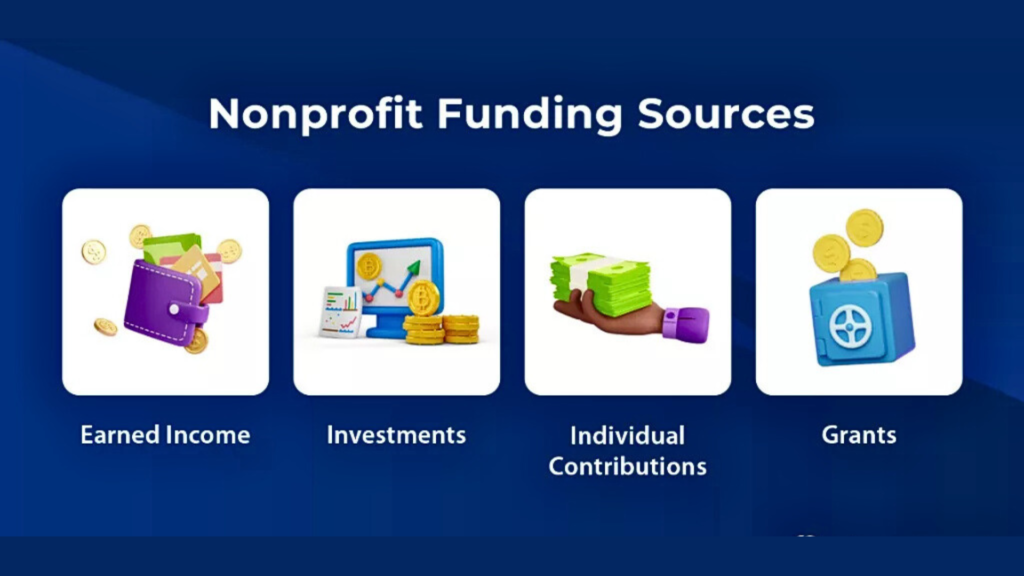Many people may be misled by the name “nonprofit” to believe that nonprofit organizations don’t make money. Although these organizations don’t make a profit, they must raise funds to sustain their operations, support their causes, and pay their staff.
So, what makes a nonprofit different from a for-profit business?
Instead of distributing profits to owners or shareholders, nonprofits reinvest their earnings back into their cause. So, how do nonprofit organizations make money while staying true to their charitable goals?
We’ll now explore the various ways nonprofit organizations make money, how that money is used, and some of the pros and cons of nonprofit organizations.
Understanding Nonprofit Organizations
Before discussing how nonprofits make money, it’s important to understand their nature. Nonprofits are often known as charitable organizations that unite people who want to work toward something noble.
Nonprofits have a specific mission or purpose, usually meeting humanitarian, religious, educational, or societal needs. They are structured so that any profits they make are reinvested back into their mission rather than distributed to owners or shareholders like for-profit organizations.

Many nonprofits benefit from being tax exempt, meaning they don’t have to pay federal taxes on income related to their mission. This tax-exempt status (granted under section 501(c)(3) of the Internal Revenue Code for many charitable organizations) allows them to allocate more resources toward achieving their goals.
Nonprofits include many organizations, from large entities like hospitals and universities to small local charities. Despite their tax-exempt status, nonprofits must still generate income to cover operating expenses, including salaries, program costs, and overhead. So, how do they do it? Let’s find out.
ALSO READ: New Bill To Give $1,400 Cash to Homeless Youth
How Do Nonprofit Organizations Make Money?
Nonprofit organizations use various strategies to raise funds for their operations. Here are some of the most common revenue sources for nonprofits:
1. Donations
For many charity organizations, donations are their primary source of funding. These can come from individual donors, businesses, or foundations. Charitable donations can be made as one-time gifts, recurring contributions, or even planned gifts through estates and wills. To encourage donations, many nonprofits depend heavily on fundraising activities like crowdfunding, charity events, and annual giving campaigns.
2. Grants
Another primary source of funding for nonprofits is grants. These are funds given by private foundations, corporations, or government agencies to support certain projects or initiatives. Unlike loans, grants usually don’t need to be repaid. However, receiving a grant often involves an extensive application process and strict requirements for how the money is used.
3. Membership Fees
Some nonprofit organizations generate income by charging membership fees. This is common among professional associations, museums, or clubs where people pay to become members for benefits like access to resources, events, or educational opportunities.
4. Program Service Fees
Nonprofit organizations often offer services to the public and sometimes charge fees for these services. For example, educational nonprofits may charge fees for workshops and training programs, and hospitals may charge for medical care. Usually, these fees are set at a rate that allows the organization to cover expenses without trying to make any profit.

5. Product Sales
Some nonprofit organizations make money by selling products. For instance, a nonprofit might sell branded products like mugs or T-shirts, with the funds raised going toward their cause. In the same way, some organizations sell products produced by beneficiaries of their programs, like crafts made by artisans in developing countries, to support their mission.
6. Partnerships and Sponsorships
Corporate sponsorships and partnerships can be a valuable funding source for nonprofit organizations. In exchange for financial support, companies that partner or sponsor nonprofits might receive recognition, advertising opportunities, or tax benefits. Sponsorships are standard in the arts, sports, and environmental sectors, where companies support causes that appeal to their brand and customer base.
7. Investment Income
Major nonprofit organizations sometimes have investment portfolios or endowments. They generate revenue from dividends, interest, and capital gains from these investments. For example, universities often use their endowments to fund scholarships, research, and other institutional needs.
8. Fundraising Events
Another common strategy used by nonprofits to raise money is to host events. Examples of events where they can request donations, sell tickets, or gain sponsorships to generate income include charity auctions, galas, fun runs, and benefit concerts.
How Do Nonprofits Use the Money They Make?
If you’ve ever wondered what the money nonprofits make is used for, here’s your answer. Nonprofits basically allocate the money they make based on the goals stated in their mission statements. First, they use the money to run the nonprofit’s program and service expenses like feeding the homeless and distributing relief packages to those in need.
They also use the money generated for the daily operations of the organization, like salaries, office supplies, utilities and other overhead costs. Additionally, nonprofits invest some of the money they make in marketing for fundraising, event planning and outreach efforts to attract donations and support.

Another one of the most common questions people ask is: how do nonprofit owners make money?
The answer lies in understanding that technically, nonprofit organizations don’t have “owners” in the same way that for-profit organizations do. Instead, nonprofits are managed by boards of directors or trustees.
However, nonprofit employees, including founders and executives, can receive salaries. Their compensation is determined by the nonprofit’s budget and should align with the staff’s roles and responsibilities. It’s important to note that salaries must be fair rather than excessive, as nonprofit revenue is meant to focus mainly on charitable missions.
ALSO READ: Does GoFundMe Have Tax Consequences: What You Need To Know
Pros and Cons of Nonprofit Organizations
Nonprofit organizations are fundamental to society because they provide essential services and address critical social issues. However, running a nonprofit has its benefits and challenges. Here are some pros and cons of nonprofit organizations:
Pros
- Exempt from Taxes: Many nonprofit organizations benefit from not having to pay federal taxes, which allows them to allocate more funds toward their mission.
- Impact on the Community: Nonprofit organizations often address critical societal issues by helping those in need, promoting education, and advocating for change.
- Access to Grants and Donations: Nonprofit organizations are allowed to apply for grants and raise money through donations that are not available to for-profit businesses.

Cons
- Dependence on External Funding: Nonprofits often rely heavily on donations and grants, which can be challenging to get, competitive and unpredictable.
- Limited Financial Flexibility: Nonprofits cannot build up funds or grow as quickly as for-profit businesses because they must reinvest any extra revenue into the organization.
- Regulatory Scrutiny: Nonprofits must meet strict government regulations and undergo regular audits to maintain their tax-exempt status and prove they use their funds responsibly.
Now that we’ve discussed what nonprofits are, we believe we’ve answered the question: how do nonprofit organizations make money?” — what is the money used for, and what are the pros and cons associated with nonprofits? So, if you’re considering starting or supporting a nonprofit, understanding how they make and use money is vital to ensuring success and sustainability in the long term.

